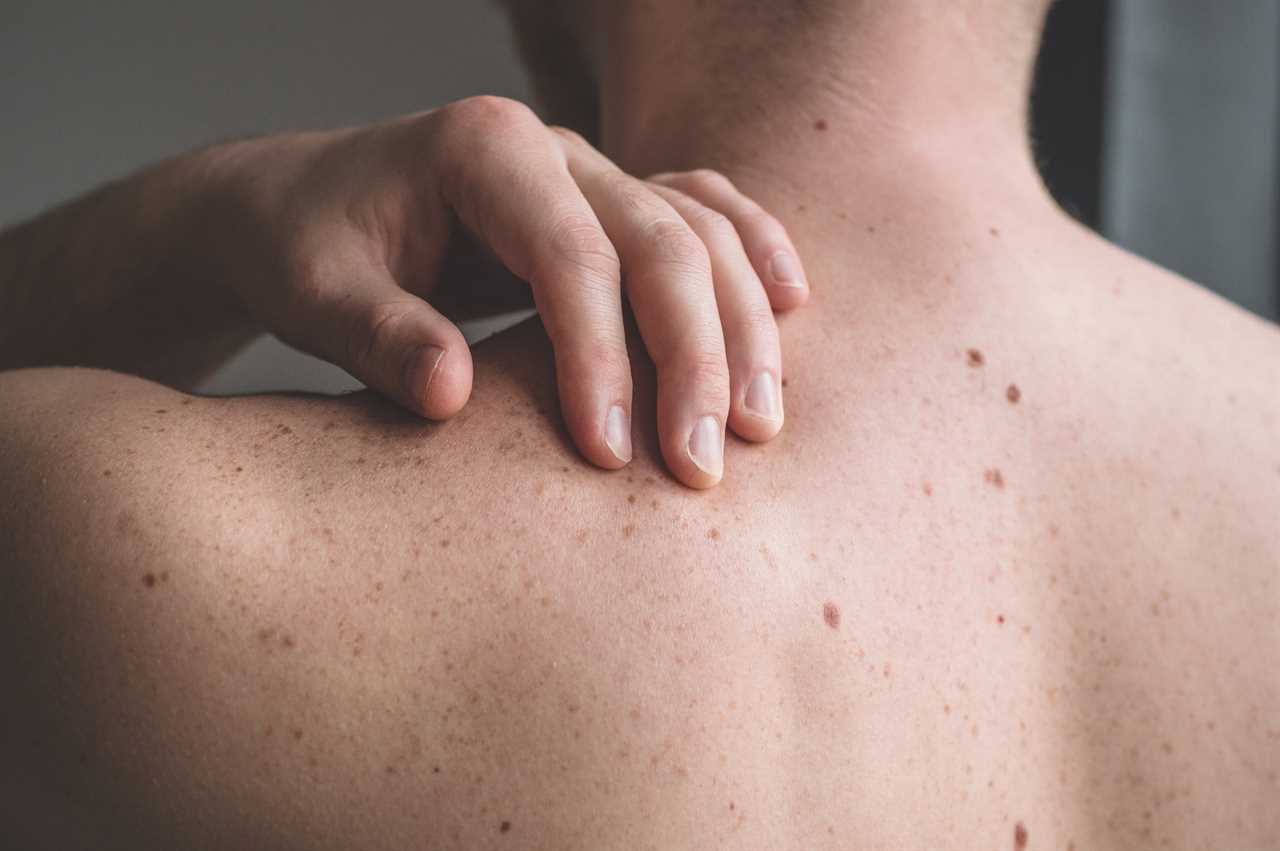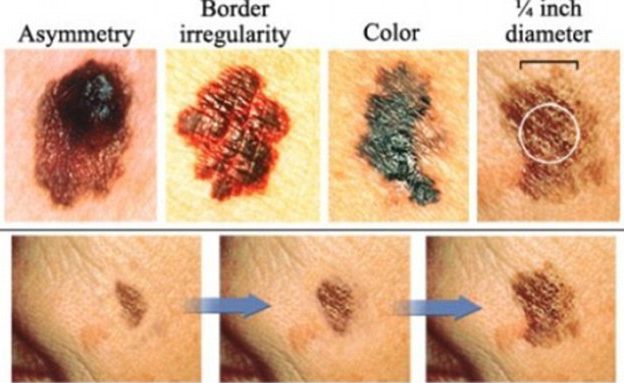YOU might think that you can only get skin cancer if you’re a so-called ‘sun worshipper’ but experts say that is simply not the case.
It’s a condition that is becoming increasingly common in the UK and in some cases, can be deadly.

Skin cancer is becoming increasingly common in the UK – here we take a look at the signs and symptoms you must watch out for

Look out for the ABCs when it comes to checking moles
Like with any cancer, survival rates are best when the illness is detected fast.
That’s why it’s worth knowing the the signs when it comes to cancer.
But many people aren’t aware of what skin cancer can look like.
It doesn’t just cause moles to change – it can create lumps and lesions that people mistake for spots.
Sadly thousands still die of skin cancer every year in the UK, despite the fact almost nine in 10 cases of the most deadly form are preventable.
There are various forms of skin cancer that generally fall under non-melanoma and melanoma.
Non-melanoma skin cancers, diagnosed a combined 147,000 times a year in the UK, kill around 720 people a year in the UK.
Melanoma, meanwhile, is diagnosed 16,000 times a year, but is the most serious type that has a tendency to spread around the body.
It takes the lives of 2,340 people per year.
Skin cancer has become more common in the UK, thought to be because Brits have been going abroad on holiday more in recent decades.
According to Cancer Research UK, since the early 1990s, melanoma skin cancer cases have more than doubled in the UK and it’s projected to rise further.
Non-melanoma has increased even more, by two-and-a-half-times in the same time period.
Experts recommend performing regular checks of their skin to spot potential signs of the disease returning, or new melanomas appearing.
What is skin cancer?
Non-melanoma skin cancer
Non-melanoma skin cancer refers to a group of cancers that slowly develop in the upper layers of the skin.
The cells in the epidermis (top layer of skin) are most at risk of sun damage.
In the epidermis, the most common cells are called keratinocytes.
The cells continuously shed as new ones form. However, when the skin is exposed to too much sun, it causes DNA damage.
Over time, this becomes a problem. It causes the cells to grow in an uncontrolled manner, which leads to cancerous tumours.
Melanoma skin cancer
Melanoma is a type of skin cancer that can spread to other organs in the body.
Melanocytes are cells in the skin that give us the colour of our skin because they produce a pigment, known as melanin.
When you sit in the sun, melanocytes produce more pigment (a sun tan), which spreads to other skin cells to protect them from the sun’s rays.
But melanocytes are also where cancer starts.
Too much UV causes sunburn, and this is a sign of damage to the skin’s DNA.
The UV triggers changes in the melanocytes, which makes the genetic material become faulty and cause abnormal cell growth.
People who burn easily are more at risk of skin cancer because their cells do not produce as much pigment to protect their skin.
Those with albinism are at the most risk because their skin produces no pigment at all.
What are the symptoms?
Melanoma
The most common sign of melanoma is the appearance of a new mole or a change in an existing mole.
Most experts recommend using the simple “ABCDE” rule to look for symptoms of melanoma skin cancer, which can appear anywhere on the body.
- Looks smooth and pearly
- Seems waxy
- Looks like a firm, red lump
- Sometimes bleeds
- Develops a scab or crust
- Never completely heals
- Is itchy
- Looks like a flat red spot and is scaly and crusty
- Develops into a painless ulcer
Around 75 per cent of all skin cancers are BCCs. These are typically slow-growing and almost never spread to other parts of the body.
If treated at an early stage, this form of skin cancer is usually completely cured.
If they do become more aggressive, BCCs may spread into the deeper layers of the skin and into the bones – which can make treating it more difficult.
Squamous cell carcinoma (SCC)
Another form of non-melanoma skin cancer is squamous cell carcinoma.
This is a cancer of the keratinocyte cells which are in the outer layer of the skin.
These cells are mainly found on the face, neck, bald scalps, arms, backs of hands and lower legs.
A lump on the skin may:
- Appear scaly
- Have a hard, crusty cap
- Be raised
- Be tender to touch
- Bleed sometimes
Non-melanoma skin cancer most often develops on areas of skin regularly exposed to the sun, such as the face, ears, hands, shoulders, upper chest and back.
Can the disease be treated?
When found early, skin cancer can often be treated successfully.
However, there is a chance that it can come back.
Types of treatment can depend on what skin cancer it is, how far it’s spread, where the cancer is and what stage it’s at.
The main treatment is surgery to remove it from the affected area. Usually, the surgery carried out is minor and carried out under local anaesthetic.
Some may be given a skin graft depending on where the cancer is – or if it covers a larger area.
When surgery cannot be used, other treatments include: radiotherapy, immunotherapy and chemotherapy cream.
The NHS says in the past, it was very rare to cure advanced melanoma cancer. But now, there are ways to slow the growth of the cancer and extend someone’s life.
For more information visit: cancerresearchuk.org






